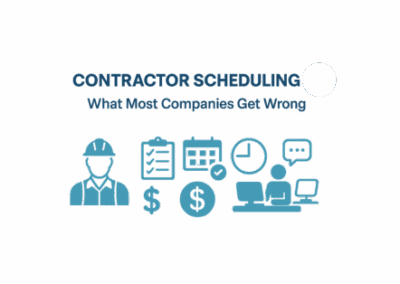As the workforce continues to evolve, it’s becoming increasingly common to see employees from different generations working together. In fact, it’s not uncommon to see employees from up to five different generations working in the same workplace. With each generation comes unique perspectives, work styles, and values. Managing a multigenerational workforce can be a challenge, but it’s a challenge that can be overcome with the right approach.

What is a Multigenerational Workforce?
A multigenerational workforce is a term used to describe a workplace where employees from different age groups and generations work together. It refers to a workforce that includes individuals from at least two, and often more, generations, such as Baby Boomers, Gen X, Millennials, and Gen Z.
With the increase in life expectancy and the delay of retirement, it’s becoming more common for employees from different generations to work together in the same workplace. Each generation brings its unique perspective, values, and work styles, which can create both opportunities and challenges for managers and employers. A multigenerational workforce requires a management approach that recognizes and values these differences and leverages them to create a cohesive and productive team.
Advantages Vs Disadvantages of Having a Multigenerational Workforce
A multigenerational workforce, where employees from different age groups and generations work together, has both advantages and disadvantages. On the one hand, having a diverse group of employees can lead to more innovative ideas, better customer service, and increased job satisfaction. Additionally, older employees have more experience and knowledge, which they can pass on to younger generations, while younger employees can share their technological skills with older employees.
On the other hand, communication barriers, potential conflicts, stereotypes, and generational gaps can create challenges in a multigenerational workforce. Managing these challenges requires a commitment to mutual respect and understanding, as well as creating a culture that values diversity and collaboration. Overall, the advantages of a multigenerational workforce outweigh the disadvantages, but it requires a proactive approach to management and communication to ensure that everyone on the team is working towards a common goal.
Strategies to Manage a Multigenerational Workforce

Communication
Each generation may have different communication styles, and what works for one may not work for another. Managers should take the time to understand how each generation prefers to communicate and adapt their communication styles accordingly. For example, older employees may prefer face-to-face conversations, while younger employees may prefer text messages or instant messaging. Encouraging open communication and providing training on effective communication can help bridge any generational gaps and create a more productive and cohesive team.
Address Conflict
Conflicts can arise in any workplace, but in a multigenerational workforce, differences in values and work styles can escalate into more significant issues. Managers should address conflicts proactively by promoting open communication and creating a culture of respect and understanding. This can help prevent conflicts from escalating and create a more positive and productive work environment.
Embrace Diversity

One of the most crucial strategies for managing a multigenerational workforce is embracing diversity. Each generation brings its unique perspective and experience to the table. Encourage employees to share their views and ideas, and provide opportunities for them to learn from each other. A diverse workforce can bring a fresh perspective to problem-solving and lead to better business outcomes. Managers should make an effort to create a culture of inclusion and respect for all employees, regardless of their age or background.
Knowledge sharing
Baby boomers and Gen Xers bring years of experience and knowledge, while millennials and Gen Zers bring fresh ideas and technological know-how. Encouraging knowledge sharing can help employees learn from each other and bridge any generational gaps. Managers can facilitate this by setting up mentoring programs or creating opportunities for cross-generational collaboration. This can also help employees feel valued and invested in their careers, leading to higher levels of job satisfaction and retention.
Train and Develop
Different generations may have different skill sets and knowledge, which can lead to skill gaps in the workforce. Providing training and development opportunities can help employees acquire new skills and stay up-to-date with the latest trends and technologies. This can also help employees feel valued and invested in their careers, leading to higher levels of job satisfaction and retention.
Analyze Different Work Styles
Finally, each generation may have a different approach to work and may have different expectations around work-life balance. Managers should recognize and accommodate these differences to create a supportive work environment. For example, older employees may prefer more structured work arrangements, while younger employees may value flexibility and remote work options. By recognizing and accommodating these differences, managers can create a more inclusive and supportive work environment for all employees.
Final Thoughts
Managing a multigenerational workforce requires a strategic approach that takes into account the unique values, expectations, and communication styles of each generation. By following these strategies, managers can create a cohesive and productive team that leverages the strengths of each generation. With the right strategies in place, managing a multigenerational workforce can lead to better business outcomes, increased job satisfaction, and higher levels of employee retention. As the workforce continues to become more diverse, it is essential for managers to understand how to manage a multigenerational workforce effectively.




